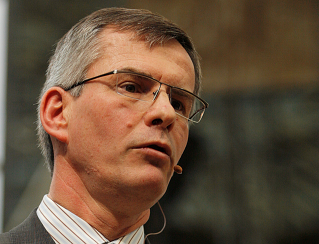www.zfenglish.com - Last update 08:53
Dacia CEO: We Have To Keep An Eye On Our Competitiveness
03.12.2013
Dacia’s Romanian plant in Mioveni will also compete starting this year against Renault’s plant in Chennai, India, where Renault is manufacturing Dacia Duster for the UK.
Competition from India comes less than one year after Renault started production for two of Dacia’s five basic models in Tangier, Morocco, where labor costs are half those on the Romanian market.
In addition, Dacia sales went up 20% on the Moroccan market and the market grew 30%, while in Romania Dacia sales have been on a decline for more than six years, while the market has lost more than 80% of its volume in the past five years.
“There are several types of costs, from the simple, production one, to the global cost, which includes logistics expenditure such as transport to clients.
When Renault decided to manufacture the right-hand drive Duster in Chennai, India, it did it because it wanted a fast and efficient approach. We have to keep an eye on how competitive we are against that of the Chennai plant,” Jerome Olive, general manager of Romanian-based Automobile Dacia, told ZF in an interview at the Geneva Motor Show, where Dacia unveiled its new Logan MCV.The competitiveness of the Indian plant will increase after the 10% customs tax will be eliminated as part of a free trade agreement to be signed this spring by the European Union and India.
“The fiscal aspect is very important, especially in the auto sector, which is highly competitive,” Olive says.
He adds that Renault has invested a lot in the Romanian plant in the past few years and that it now has new expectations in terms of investment efficiency, the plant’s competitiveness and productivity.
“It is important for the overall balance to be favorable to us and implicitly for us to get more projects. If labor costs are higher in Romania than in India or in Morocco, it means we have to be more efficient in terms of the operations that don’t have added value for clients, to get efficiency thanks to our closeness to the engineering center that neither Morocco nor India have,” Olive explains.
Within the Renault group the Romanian plant competes against the manufacturing facilities in India and Morocco, with 2013 being the first year of production for the new Moroccan plant, in which Renault invested over EUR1 billion.
The advantages of the Tangier-based plant the labor costs, with Moroccans earning EUR250 net per month on average, which compares with net salaries of EUR500 per month in Romania.
In addition, the Romanian market has lost 80% of its volume in the past five years, with Dacia selling 20,000 cars per year on the local market after more than seven years of declines, while in Morocco the market grew almost 30% last year to 135,000 cars. Dacia sales accounted for 20% of Moroccan car sales, with over 27,000 units.
However, Jerome Olive explains the Mioveni plant continues to have advantages over the Tangier facility - the high degree of local integration and the closeness of the engineering center in Titu.
“Considering the high number of components in a car, this entails a significant logistical effort, and in Mioveni we have a solid base of suppliers and the more solid it is, the highest the plant’s competitiveness.”
(English version by Daniela Stoican)

